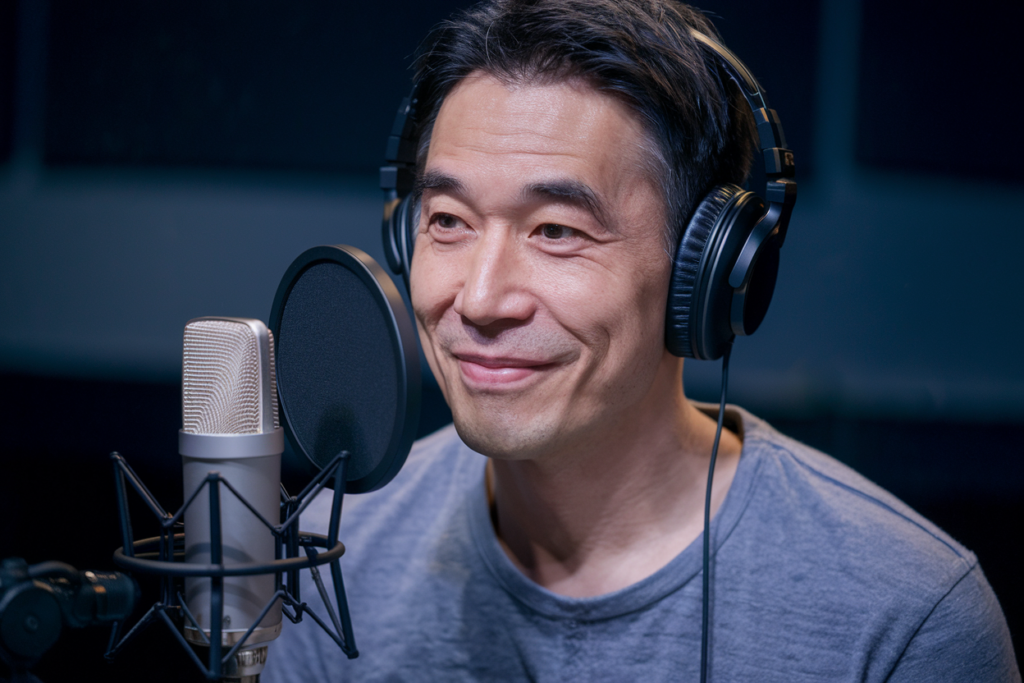Key Takeaways
- Understanding Dialects: Recognizing the various Japanese dialects, like Kansai and Kanto, is essential for creating relatable and authentic voiceovers.
- Standard vs. Regional Japanese: Standard Japanese (Hyojungo) provides broad accessibility, while regional dialects offer unique cultural flavors that can enhance emotional engagement.
- Phonetic Variations: The phonetic differences in pronunciation between regional and standard Japanese significantly impact how voiceovers are perceived by audiences.
- Cultural Nuances Matter: Each dialect carries cultural references that can elevate storytelling and deepen connections with the audience.
- Application in Media: Different contexts—such as animation or video games—require tailored approaches to voiceover work, making it crucial to choose the appropriate dialect for character authenticity.
- Audience Engagement: Using familiar language patterns through specific dialects can foster nostalgia and loyalty among listeners, enhancing overall project impact.
Ever wondered why some voiceovers in Japanese resonate more than others? When it comes to comparing regional and standard Japanese, the differences can make or break your project. Whether you’re diving into anime, commercials, or educational content, understanding these nuances is crucial.
Overview of Japanese Dialects
Japanese features numerous dialects, each with unique characteristics and cultural significance. Understanding these dialects is crucial for voiceovers, as they can influence the authenticity and relatability of a project.
Standard Japanese (Hyojungo)
Standard Japanese, known as Hyojungo, serves as the national language. It’s commonly used in media, education, and formal settings. Most voice actors utilize this dialect to ensure broad understanding across various regions. However, it lacks regional flavor that some audiences might expect.
Kansai Dialect (Kansai-ben)
The Kansai region boasts its own vibrant dialects like Osaka-ben and Kyoto-ben. This dialect is often perceived as friendly and humorous. For projects aiming for a warm or comedic tone, incorporating Kansai elements can resonate well with specific audiences.
Kanto Dialect (Kanto-ben)
Predominantly spoken in Tokyo and surrounding areas, Kanto dialect offers a neutral sound familiar to many listeners. Voice artists using this accent may appeal to urban demographics who associate it with modernity and sophistication.
Other Notable Dialects
Other regional varieties exist throughout Japan:
- Hokkaido Dialect: Influences from local indigenous languages create distinct sounds.
- Okinawan: Unique vocabulary sets it apart; ideal for projects targeting Okinawa’s culture.
- Tohoku Dialect: Known for its slower speech patterns; conveys warmth but may require skilled voice talent to deliver effectively.
Recognizing these nuances allows you to select the right voice artist for your specific needs. Whether you’re producing anime or educational content, choosing the appropriate dialect enhances engagement by connecting authentically with your audience’s cultural context.
Importance of Voiceovers in Media
Voiceovers play a crucial role in media by enhancing storytelling and creating emotional connections. They bring characters to life, guide narratives, and engage audiences across various platforms like anime, commercials, and educational content.
Role of Language Variations
Language variations significantly influence how voiceovers resonate with listeners. Different dialects inject unique flavors into performances. For instance, using the Kansai dialect can evoke warmth and humor, making it ideal for light-hearted projects. On the other hand, Standard Japanese provides a neutral tone that appeals broadly but lacks regional charm. Choosing the right dialect helps ensure your message aligns with your audience’s cultural context and expectations.
Impact on Audience Engagement
Engaging an audience hinges largely on relatability. When voice artists use familiar language patterns or accents, they establish a connection that captures attention. A local dialect can evoke nostalgia or pride among listeners, fostering loyalty to a brand or project. The right choice in voice talent not only enhances authenticity but also boosts overall engagement levels—making your content more memorable and impactful.
By understanding these dynamics of voiceover work in media, you can make informed decisions about casting voice actors who truly connect with your target audience.
Comparing Regional and Standard Japanese
Understanding the differences between regional and standard Japanese is essential for effective voiceovers. These distinctions significantly impact how your project resonates with audiences, especially in anime, commercials, and educational content.
Phonetic Differences
Phonetic variations between regional dialects and standard Japanese play a crucial role in voiceover performances. Standard Japanese features a clear enunciation that appeals to wider audiences but lacks the rich textures of local dialects. For instance, Kansai dialect often employs softer consonants and distinct vowel sounds, giving it a warm and approachable feel. In contrast, Kanto dialect’s sharper phonetics may come across as more formal or precise. Choosing the right phonetic style can influence how relatable your voice talent sounds to listeners.
Cultural Nuances
Cultural nuances embedded in different dialects can elevate your voiceover projects by adding layers of authenticity. Each regional accent carries its own set of cultural references and emotional tones that can enhance engagement. For example, using Kansai dialect might inject humor into a character’s personality or make a commercial feel more inviting. On the other hand, opting for Standard Japanese ensures clarity but may not evoke specific emotions tied to certain regions. By aligning your choice of voice artist with cultural context, you strengthen emotional connections with your audience while reinforcing brand messaging through familiar language patterns.
Applications in Voiceover Work
Understanding the applications of regional and standard Japanese in voiceover work can significantly enhance your project’s impact. Different contexts call for different approaches, so recognizing when to use each dialect is key.
Examples in Animation
In animation, voiceovers breathe life into characters. The choice between regional and standard Japanese influences how audiences perceive these characters. For instance, using the Kansai dialect can add a friendly or humorous touch, making characters more relatable and engaging. On the other hand, Standard Japanese often provides clarity and broad appeal, especially for mainstream projects targeting diverse audiences. When creating animated content aimed at younger viewers or comedic narratives, opting for a regional accent might resonate better than standard tones.
Use in Video Games
Video games thrive on immersive experiences. Selecting the right voice talent can elevate gameplay by aligning character voices with their backgrounds and personalities. Regional accents serve to create authenticity—characters from specific areas feel real when voiced appropriately. Whether it’s a brave hero speaking in Standard Japanese or a comical sidekick with a distinct regional flair, each choice impacts player connection and immersion. Engaging voice artists who understand these nuances enables richer storytelling that captivates players throughout their gaming journey.
By applying these insights into your projects, you’re more likely to connect with your audience effectively through tailored voiceovers that resonate on multiple levels.
Conclusion
The choice between regional and standard Japanese voiceovers can significantly shape your project’s impact. By understanding the nuances of various dialects you’ll enhance engagement and authenticity in your storytelling. Whether you aim for the warmth of the Kansai dialect or the clarity of Standard Japanese, aligning your voiceover with cultural context is key to resonating with your audience.
When selecting voice talent consider how different accents can elevate character relatability and immersion. By making informed decisions about language use you’ll not only capture attention but also create deeper emotional connections that enrich the overall experience for your listeners or viewers.
Frequently Asked Questions
What is the difference between regional and standard Japanese voiceovers?
Regional Japanese voiceovers use dialects specific to certain areas, like Kansai or Kanto, while standard Japanese (Hyojungo) is the national language. Regional dialects can evoke different emotions and cultural nuances, enhancing character relatability and engagement in media.
Why are regional dialects important in anime and commercials?
Regional dialects add authenticity and emotional depth to characters. For instance, the Kansai dialect can bring warmth and humor, making characters more relatable. This connection helps captivate audiences by resonating with their cultural backgrounds.
How does standard Japanese differ from regional accents phonetically?
Standard Japanese features clear enunciation suited for broad audiences, while regional accents like Kansai have softer consonants and unique vowel sounds. These phonetic differences contribute to a distinct emotional tone that influences audience perception.
How do I choose the right voiceover style for my project?
Consider your target audience and project context. If aiming for clarity in mainstream media, standard Japanese works well; however, if seeking warmth or humor in animation or commercials, a regional dialect might resonate better with viewers.
Can using a regional accent enhance storytelling?
Yes! Using a regional accent can make characters feel more authentic and relatable. It adds layers of cultural significance that enrich storytelling by creating deeper emotional connections with the audience.
What role do voiceovers play in educational content?
Voiceovers help convey information clearly while engaging listeners emotionally. Utilizing standard Japanese ensures clarity across diverse audiences; however, incorporating regional accents can foster familiarity and maintain interest among specific demographic groups.
Are there specific contexts where one should prefer standard over regional voices?
Yes! Standard Japanese is ideal for projects requiring universal appeal or clarity, such as news broadcasts or formal education materials. In contrast, projects aimed at localized markets may benefit from employing regional accents for relatability.
How do cultural nuances affect voiceover performance?
Cultural nuances embedded in dialects influence how messages are received by audiences. Different accents carry unique references that enhance emotional impact—Kansai might inject humor into performances whereas Standard retains neutrality but lacks local flavor.







